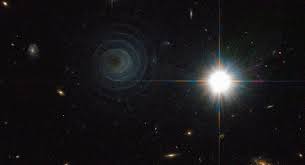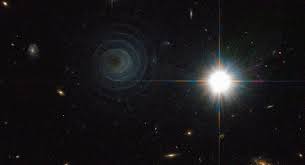
A satellite that is linked to a giant disco ball was secretly sent into orbit by a New Zealand space company that is privately owned. And this act has drawn the criticism of astronomers across the world.
A remote sheep and cattle farm on the Mahia Peninsula in New Zealand was used for the secret space launch by space exploration startup company called Rocket Lab last week.
The launch had initially drawn jubilation and pride throughout New Zealand and the founder and chief executive of the space exploration company – Peter Beck, termed the event as an “almost unprecedented” step in commercial space exploration.
However, since the launch, it has been revealed that the rocket was carrying a payload of what is being called “Humanity Star” – which is a geodesic sphere three foot in width and which has been constructed from carbon fibre. The sphere is also fitted with 65 highly reflective panels. The rocket also took to space conventional satellites.
The company said that the sphere will reflect back to Earth sun rays which would have the effect of a flashing light from anywhere on the planet. It would be nine months that the sphere would be the brightest object in the night sky. After that the sphere would re enter the Earth’s atmosphere.
The company’s chief executive and founder, Peter Beck, said the sphere would “create a shared experience for everyone on the planet” while the company said that the Humanity Star was intended to be a “reminder to all on Earth about our fragile place in the universe”.
However, this is not agreed to by many astrophysicists. A particularly sore point for his profession may have been unintentionally touched by Rocket Lab, said Richard Easther from the University of Auckland.
The launch of a glinting disco ball in space is unwelcome for scientists because they are already troubled with light pollution which hinders their efforts to focus on stars.
“This one instance won’t be a big deal but the idea of it becoming commonplace, especially at larger scales, would bring astronomers out into the street,” Easther said.
“I can understand the exuberance for this sort of thing but I also get the sense that they did not realise that people could see a downside to it.”
Other scientists were however some what more diplomatic.
“Wow. Intentionally bright long-term space graffiti. Thanks a lot @RocketLab,” California Institute of Technology astronomer Mike Brown wrote on Twitter.
And Caleb Scharf, the director of astrobiology at Columbia University said that the star represented “another invasion of my personal universe, another flashing item asking for eyeballs” in a write up in the Scientific American.
“Most of us would not think it cute if I stuck a big flashing strobe-light on a polar bear, or emblazoned my company slogan across the perilous upper reaches of Everest,” Scharf wrote.
“Jamming a brilliantly glinting sphere into the heavens feels similarly abusive. It’s definitely a reminder of our fragile place in the universe, because it’s infesting the very thing that we urgently need to cherish.”
(Source:www.theguardian.com)
A remote sheep and cattle farm on the Mahia Peninsula in New Zealand was used for the secret space launch by space exploration startup company called Rocket Lab last week.
The launch had initially drawn jubilation and pride throughout New Zealand and the founder and chief executive of the space exploration company – Peter Beck, termed the event as an “almost unprecedented” step in commercial space exploration.
However, since the launch, it has been revealed that the rocket was carrying a payload of what is being called “Humanity Star” – which is a geodesic sphere three foot in width and which has been constructed from carbon fibre. The sphere is also fitted with 65 highly reflective panels. The rocket also took to space conventional satellites.
The company said that the sphere will reflect back to Earth sun rays which would have the effect of a flashing light from anywhere on the planet. It would be nine months that the sphere would be the brightest object in the night sky. After that the sphere would re enter the Earth’s atmosphere.
The company’s chief executive and founder, Peter Beck, said the sphere would “create a shared experience for everyone on the planet” while the company said that the Humanity Star was intended to be a “reminder to all on Earth about our fragile place in the universe”.
However, this is not agreed to by many astrophysicists. A particularly sore point for his profession may have been unintentionally touched by Rocket Lab, said Richard Easther from the University of Auckland.
The launch of a glinting disco ball in space is unwelcome for scientists because they are already troubled with light pollution which hinders their efforts to focus on stars.
“This one instance won’t be a big deal but the idea of it becoming commonplace, especially at larger scales, would bring astronomers out into the street,” Easther said.
“I can understand the exuberance for this sort of thing but I also get the sense that they did not realise that people could see a downside to it.”
Other scientists were however some what more diplomatic.
“Wow. Intentionally bright long-term space graffiti. Thanks a lot @RocketLab,” California Institute of Technology astronomer Mike Brown wrote on Twitter.
And Caleb Scharf, the director of astrobiology at Columbia University said that the star represented “another invasion of my personal universe, another flashing item asking for eyeballs” in a write up in the Scientific American.
“Most of us would not think it cute if I stuck a big flashing strobe-light on a polar bear, or emblazoned my company slogan across the perilous upper reaches of Everest,” Scharf wrote.
“Jamming a brilliantly glinting sphere into the heavens feels similarly abusive. It’s definitely a reminder of our fragile place in the universe, because it’s infesting the very thing that we urgently need to cherish.”
(Source:www.theguardian.com)














